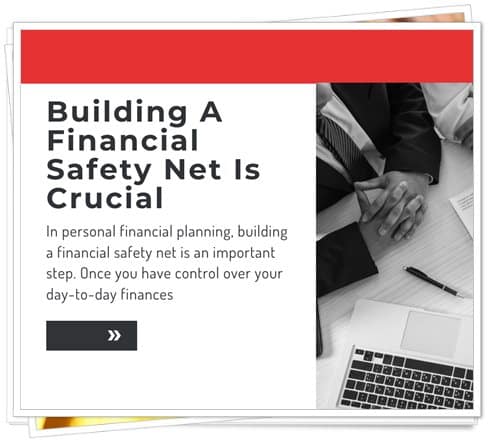
There are many reasons to hope that 2022 will be easier than the last two years. The U.S. economy has been recovering well from the pandemic strains, and the rate of unemployment is significantly lower than during the crisis.
In addition, the rate of vaccinations has reached a level that has brought more confidence still to life, returning to normal. There are plenty of indications that brighter times are ahead of us.
It will take time for the ingrained worries created in the past two years to dissipate, and regardless, it’s natural to have financial concerns when it comes to unexpected difficulties.
Threat of Economic Impacts Still Linger
Americans have been able to breathe a sigh of relief as the country’s economy has bounced back from the depths of the pandemic chaos.
Thankfully, vaccination rates have reached a point that has installed some renewed stability. Still, COVID-19 cases are again on the rise, making it challenging to predict how this recent outbreak may affect the U.S. economy.
It is more important than ever for Americans to build a financial safety net to protect themselves from further economic instabilities. This is vital for the potential practical benefits and the peace of mind so desperately needed after so much uncertainty.
Having a financial safety net can help Americans weather the storm of any unexpected layoffs or shutdowns. There are many unfortunate yet justifiable reasons for layoffs in such turbulent times.
Jeffrey Johnson, a lawyer says, “During the pandemic, many layoffs were sadly unavoidable, but employers still have a legal responsibility to follow the law regarding dismissing staff. If you think you have been unfairly treated, you must seek legal advice, regardless of the pandemic conditions.”
Building an emergency fund or creating an income from a side hustle is a sensible way to protect yourself from immediate financial strain if impacted by economic downturns.
The Rising Cost of Living Putting Strain on Household Affordability
According to the U.S. Bureau of Labor Statistics, the Consumer Price Index rose by 6.8% between November 2020 and November 2021. This increase represents the most significant rise since 1982. Meanwhile, energy prices rose by 33.3% year-on-year, and food prices grew by 6.1% for the same period.
Goldman Sachs, the investment banking giant, has issued a warning that inflation in the U.S. could get worse before it starts getting better.
With continued pressure on the supply chain sector, the cost of consumer goods is likely to remain high into 2022.
There is hope that things may settle and improve as the year unfolds, but the last two years have taught us that we cannot count on economic stability as a given to secure ourselves financially.
Insurers to Cover At-Home Virus Tests
The Biden administration has recently announced new guidelines that will see private insurers covering the cost of eight monthly at-home Covid tests per insured member. These new guidelines expand the access to coronavirus tests for millions of Americans and further remove the associated financial barriers to mass testing.
Approximately 45% of the American population are reportedly privately insured, most of which are covered through their employers. This move also represents another reason Americans consider assessing their protection and securing adequate cover.
Of course, the types of insurance coverage most vital to you and your family will depend upon your circumstances. Still, income protection, health insurance, and life insurance are among the most important to consider, especially in economic uncertainty.
How much an insurance policy costs depends on several underwriting factors such as age and gender but securing a $250,000 life insurance policy for as little as $10 a month is possible.
Unexpected Expenses on Top of Economic Uncertainty
Every sensible adult must make provisions for unforeseen expenses, but it’s more important when combined with an elevated likelihood for economic instabilities than ever.
The pandemic conditions have alerted us to the need for emergency funds, but the truth is, unexpected costs can arise at any time. Emergency home repairs or medical bills are just some examples, and if these crop up in addition to sudden layoffs or other lockdowns, the financial implications can quickly become catastrophic.
Step 1: Build an Emergency Fund
The first step in creating financial stability and independence is building an emergency fund. Consider whether you splurge or overspend and commit to shaving these outgoings down and parking them away. You can save them away in a high-yield savings account and start building a significant emergency fund.
Step 2: Assess Your Income Security
Depending upon your job/income security level and how long it would take to replace it, you will need to establish the extent of emergency funds that would see you through difficult times.
For example, a three-month emergency fund may be sufficient for those in a highly secure profession that would only result in a short-term search for a new role if necessary. On the other hand, a six-month fund would be ideal for contractors, freelancers, or anyone with a less reliable income and financial security.
Step 3: Save Your Tax Refund
Tax time is fast approaching, and on average, Americans received a tax refund of $2,827 from the 2020 tax filing season. Tax refunds often provide an unusual capital boost to a household’s cash flow. While it is hard to resist blowing it on something indulgent, it is a fantastic opportunity to park a decent chunk of money away for maximum peace of mind. Creating a financial safety net is always a prudent measure, as we never know what life may throw at us. But now, with rising inflation and continued uncertainties, it is more important than ever for Americans to make provisions to weather any unforeseen financial storms.
Leave a Reply
You must be logged in to post a comment.